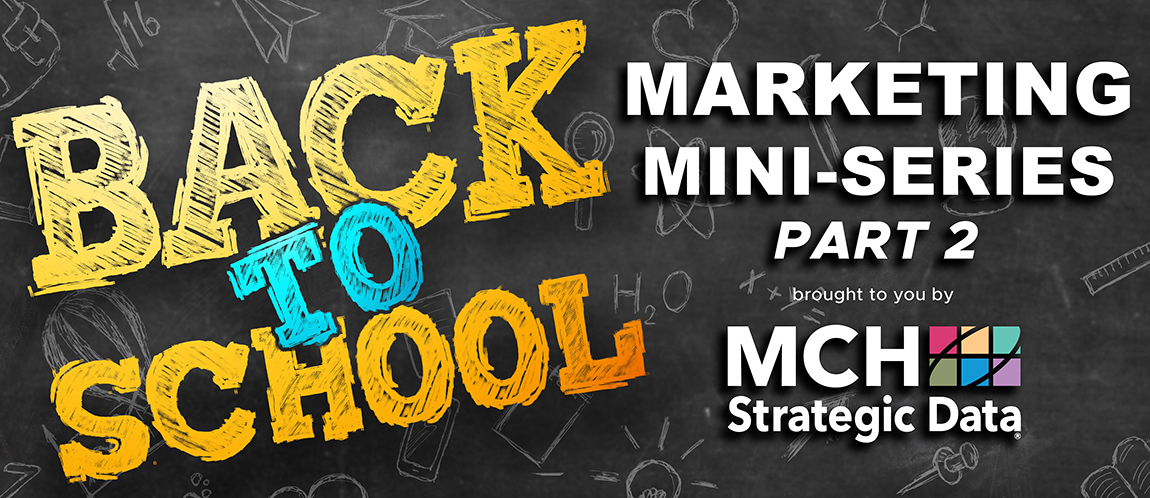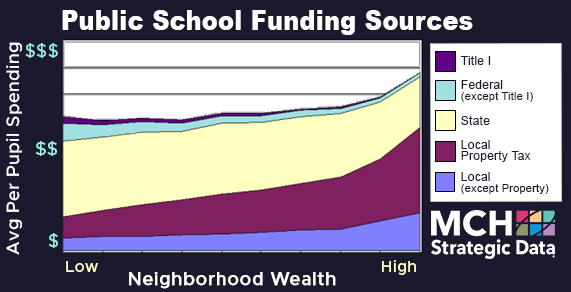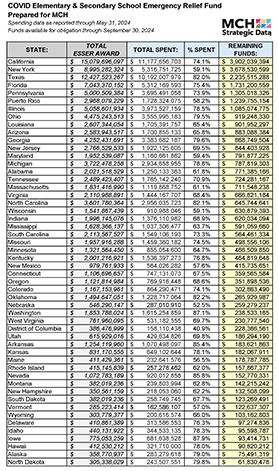
August 2, 2024 | Peter Long
Back to School Marketing: Leveraging 2024-2025 School Funding
Part 2 in our latest series on Back to School Marketing
MCH has already begun updating our Fall 2024 educational database. In the coming weeks, we'll share exciting news about our new technology, which is making updates available at unprecedented speeds. However, the focus of today's mini-series installment is the funding outlook for the 2024-2025 school year. Where should marketers invest their efforts and dollars, and where should they be cautious?
Let's start with the obvious: The K-12 market is overflowing with opportunities. As we noted in Part One, 55 million children will soon be heading back to school, and their education will be supported by over $800 billion in funding. However, not all schools are created equal when it comes to budgets. Some districts enjoy robust financial support, while others face significant constraints. So, what are the most important factors for educational marketers to consider in the 2024-2025 school year? Here are five essential insights to guide your strategies.
Tip #1: The funding for schools is solid
Based on our research school funding remains solid. We have not found any cases of states or major local areas (cities or counties) that have significantly cut school funding allocations. In fact:
- 19 States have increased their state provided funding by 3% or more
- 27 States (and DC) have increased their state funding between 1.5% to 3.0%
- Only 5 states have kept funding flat
Despite inflation over 3%, overall funding levels for 2024-2025 school year have increased, and local economies have made a strong comeback from the COVID crisis. The increase in funding is NOT the crisis that some media outlets would like everyone to believe. While some financial budget tightening may be necessary, there is still plenty of spending that will take place and plenty of opportunities for educational product and service companies. Although there is some talk in Congress of cuts to Federal educational funding channels in the 2025-2026 fiscal year, any real discussions will be dependent upon the upcoming Presidential election results.
Tip #2: ESSER funds are still available and being spent
The widely discussed "funding cliff" primarily concerns the massive influx of Elementary and Secondary School Emergency Relief (ESSER) funds, particularly the $121 billion from the American Recovery Plan (ARP). However, the deadline for schools and districts to fully obligate these funds has been extended to September 30, 2024, with a final spending deadline of January 30, 2025. Some schools and districts are experiencing spending delays and are being forced to adjust their spending plans to comply with the new timeline. It's also quite possible that another extension will be granted to give schools and districts more time to spend the money wisely rather than urgently. As of May 30, 2024, $33 billion in ESSER (ARP) funds remained unspent, with spending rates varying significantly by state. The gaps in state utilization of ESSER (ARP) funds is significant. For instance, the District of Columbia has a low percentage of funds spent at just 40%, while the state of Washington has the highest spent at 87%. Click to expand the table below to see the full breakdown of ESSER funds spent by state:
One smart strategy for marketers is to target states where a significant amount of money remains unspent. The pressure to "use it or lose it" will be intensifying in the coming months.
For more information on ESSER spending updates, visit the Covid Relief Data site from the U.S. government and select the ESSER tracking site found here. Additionally, a great article with more details on this and state funding can be found at WhiteBoard Advisors.
Tip #3: Teacher turnover is a marketer’s opportunity
The COVID-19 crisis significantly impacted both students and teachers. The rapid shift to technology-based learning, coupled with other challenges, led some educators to leave the profession for good. However, this turnover presents a unique opportunity for K-12 education marketers. As schools adapt to staffing shortages, they often allocate additional budget dollars to technology, products, and services that help reduce bottlenecks, improve school and classroom efficiencies and address things that cause capacity issues for educators or administrators.
Furthermore, teacher turnover frequently disrupts established purchasing patterns. New teachers bring fresh perspectives and are more open to exploring different vendors and solutions. This creates a valuable window for companies offering innovative educational products and services to gain a foothold in the market that may have been previously shut off with educators that were wed to specific solutions, approaches and vendors.
In the words of Winston Churchill, "Never let a good crisis go to waste." The teacher shortage, while concerning for our schools and communities, can also be an opportunity for growth and innovation in the education sector.
Tip #4: Show me the money
Private and religious schools typically rely on private funding (from parents or community donations), giving them flexibility in how they can spend these dollars. However, many private and religious schools face budget constraints or low enrollment, making them less attractive targets for educational marketers. (Note: the NAIS - National Association of Independent Schools members are the exception to this rule) The best opportunities often lie with public schools that have strong local funding from property taxes and other local sources. These districts typically have more discretionary spending power, making them ideal customers for quality educational products and services.
But how can you identify these high-potential districts? While many marketers rely on per-pupil spending data, this metric can be misleading. Public school funding is complex, involving federal, state, local, and sometimes even special funds. Non-local funding often comes with a lot of restrictions and reporting requirements, limiting schools / districts discretionary spending ability compared to schools / districts with robust local funding.
Furthermore, federal and state funding is structured to be compensatory, aiming to bridge the gap between wealthy schools and underfunded schools. This means two schools with similar per-pupil spending could have vastly different purchasing power, depending on their funding sources. As the chart below illustrates, many schools cluster around a narrow average per-pupil spending range that may vary only a few percent in total dollars spent. However, those with stronger local tax bases typically have far more flexibility to invest in the products they need, where schools with lots of Federal and State support are caught up in lots of red-tape applications and reporting requirement and catch-22 style funding traps.

Therefore, a more effective targeting strategy is to focus on community wealth and a suburban location. These factors are better predictors of a school's purchasing power than per-pupil spending alone.
Tip #5: Help Educators Access Special Funding
If your products or services qualify for IDEA, Title One, or other federal funding programs, offer comprehensive support to help educators navigate the application process. Accessing federal dollars often involves extensive paperwork, tracking, and reporting requirements. By helping with these tasks, you can remove a significant barrier for schools and increase the likelihood of them choosing your solutions.
Consider bundling your products with evidence-based reports and support services to further streamline the process. This will make it easier for educators to utilize federal funds and implement solutions effectively. Remember, schools are eager to leverage federal money, but the complexities involved can be daunting. By offering a helping hand, you can differentiate your company and unlock new sales opportunities.
Next up will be “How do you reach the appropriate educator audience you need to sell too?” Please be on the lookout for next week’s MCH Monday Marketing Moment.
Use our free ListBuilder tool to explore our education data, or Contact Us to strategize as a team.
More Insight from MCH
- Read Part 1 in our Back to School Marketing Mini-Series.
- Download our School Calendar Reference Guide for the 2024/2025 school year and get key insights from over 80,000 school calendars across the U.S.
- Download our Email Marketing to Educators 2024 whitepaper.
Need More Time?
Due to inactivity, you will be logged out within 5 minutes.
To stay logged in, please select Stay Logged In.






 Logout
Logout